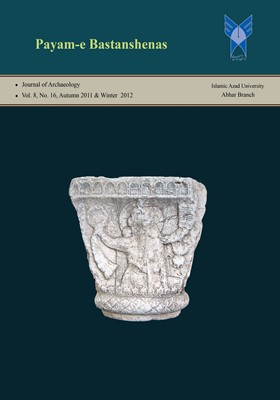Classification of Some Incised Graphical & Geographical Designs on Late Bronze Age Pottery from Tepe Pissa- Hamedan
Subject Areas : Prehistoric ArchaeologyYaqub Mohammadifar 1 , Abbas Motarjem 2 , Kamalaldin Niknami 3
1 - Associate Professor, Department of Archaeology, Bu-Ali Sina University, Hamedan, Iran.
2 - Assistant Professor, Department of Archaeology, Bu-Ali Sina University, Hamedan, Iran.
3 - Professor, Department of Archaeology, University of Tehran, Tehran, Iran.
Keywords: Iran, Archaeology, art of pottery, Bronze Age, Tepe Pissa, Graphical Motives,
Abstract :
Pending the Early Bronze Age, in the early to mid-third millennium, the material culture of central western Iran was influenced by the cultural phenomenon known as Kura-Araxes, or the Early Trans-Caucasian (E.T.C).The first evidence for E.T.C culture in western Iran was revealed at Yanik Tepe, a mound located to the northwest of Lake Urmia. The burnished hand-made ceramics had dark grey-black and red fabric and were decorated with incised and excised geometric patterns, sometimes in-filled after firing with gypsum. The characteristic ceramics were subsequently identified much further south in the Zagros Mountains. Recent fieldwork by Bu Ali Sina University has identified the existence of E.T.C. material at the mound of Tepe Pissa on the Hamedan plain, northwest of Hamadan by Mohamadifar and Motarjem in 2008. This classification and outcome study of cognitive style pottery artifacts from the excavations of the Tepe Pissa. The pottery designs can be said, these motifs are special symbols in the Iranian plateau.
_||_


